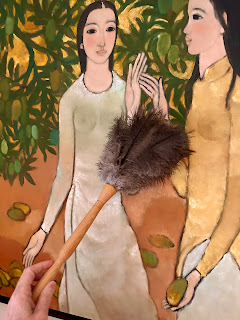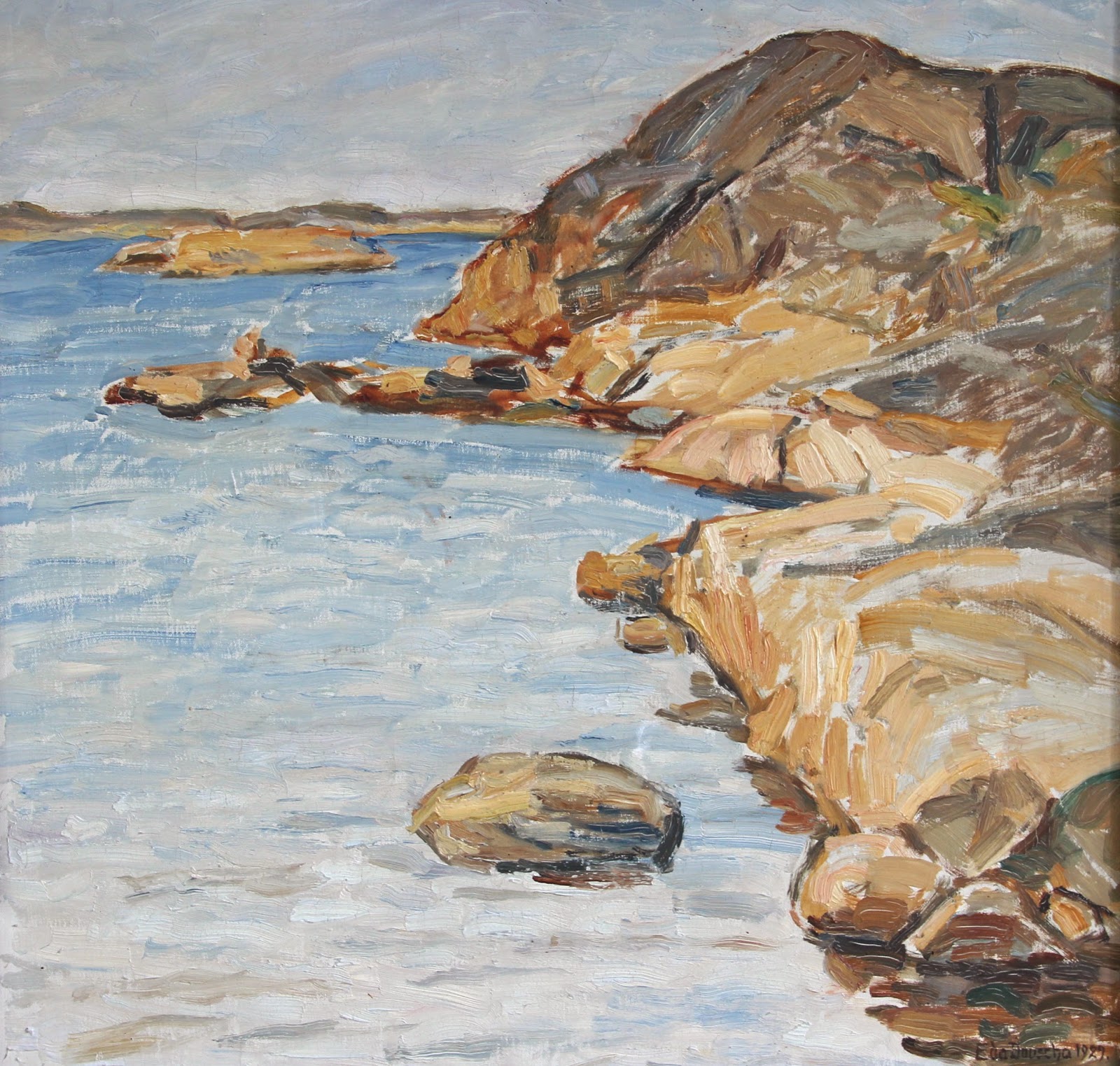The Only Thing That Should Come Between You and Your Artwork
Since I started selling "vintage art" way back before it was even a trend in 2013 there has been an explosion of vintage art sellers online. It's become trendy to offer advice and for some reason I've been seeing a LOT of posts lately about how to clean paintings. Much to my horror there are many well meaning but not so great recommendations being made. Here is my number one rule and it's simple:
ONLY USE A FEATHER DUSTER!
Please do not use a "soft cloth" or microfiber cloth. Paint becomes brittle with time and a gentle clean with a cloth could lift or snap that paint right off especially if the paint is applied thickly (impasto is the correct term. You've probably read it a million times in my painting descriptions).
Also, avoid water, any liquids or soaps unless you absolutely know what you're doing. Remember oil and water doesn't mix. It may turn out ok but I wouldn't risk it. And once you start cleaning you can't stop. A painting that has been around for 50 or 60+ years has accumulated a certain patina from airborne pollutants like dust or cigarette smoke on the surface. If you start to "just" clean "one corner" you won't be able to stop because that one clean corner won't match the rest of the painting. And the more you rub the more you risk damaging the painting. Believe me, I've learned this the hard way.
Another reason not to clean with any liquids is the paint has most likely developed cracks both microscopic and larger especially if the paint is on a softer support. If that liquid seeps down between the cracks it could cause damage and the paint may lift off of the support surface.
I know it's tempting when you have a great painting and want to restore it to its full glory but don't. I have fallen into this trap and once it happens I guarantee you won't want to have it happen again.
I bought a wonderful painting by a well known artist some years ago that needed a little bit of a clean that I thought I could easily tackle. My delight soon turned to dismay as one section of white paint (that I thought was oil paint) started to smear and lift off. I'm not sure what happened but I suspect the artist may have been using a cheaper house paint. I'm still not really sure. Unfortunately, there was nothing to do.
And, another point, artists up until very recently have used some toxic pigments such as cadmium, cobalt and lead. While, I'm sure, it's a very, very small risk you do not want to be inhaling these pigments or get them on your skin if you do disturb the artwork surface.
One more thing- poop. I'm talking about fly poop. You may have noticed small dark specks the size of a freckle on the surface of a painting. Yes, it's most likely been left by a pesky housefly and I find these flecks annoying. In this instance I do think it's ok to take an ear bud or q-tip that has been very, very slightly moistened (I'm stressing slightly here) and gently try to remove the offending spot by rubbing gently. Don't get overzealous in your enthusiasm to rid your lovely painting of the spot or you may end up with a lighter area where you've just removed years of built up patina. Or you can gently try using your fingernail. Proceed with caution.
My last point is about varnishing. I read on instagram about how varnishing was fashionable 100 years ago. Sigh. Actually, the tradition goes back over centuries and varnish was used for many important reasons not just because it was the "in" thing. Varnish was and still is used as a protectant and also to help finalise the appearance of a painting and to give color depth. It's always exciting seeing a painting come to life when the final varnish is added. But, I do think "To Varnish or Not to Varnish" is solely up to the original artist's original vision and should be solely left up to them.
The only thing that should come between you and your artwork is a feather duster! (Or a professional conservator.)
Elaine




Comments
Post a Comment